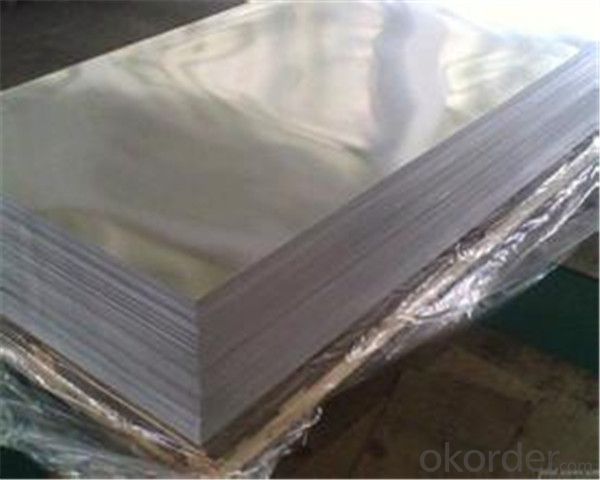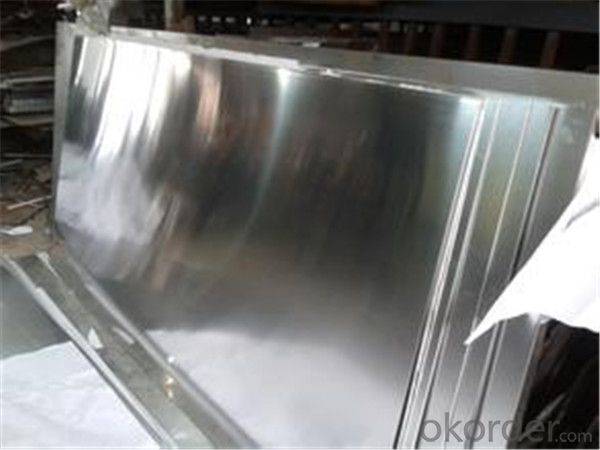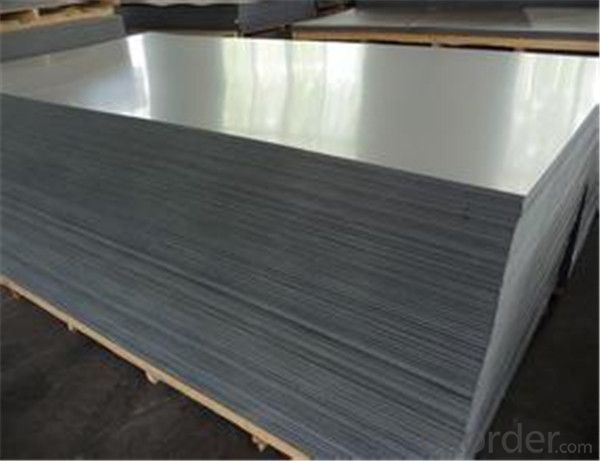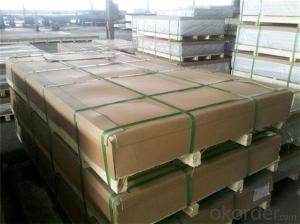Aluminum Sheet Manufactured In China High Quality 1100 3003 5052 Metal Alloy
- Loading Port:
- Shanghai
- Payment Terms:
- TT OR LC
- Min Order Qty:
- 5 m.t.
- Supply Capability:
- 100000 m.t./month
OKorder Service Pledge
OKorder Financial Service
You Might Also Like
Item specifice
Packaging & Delivery
Packaging Details: | Standard export packing or following customer's demand |
Delivery Detail: | Within 20-25days or according to the order quantity |
High Quality and Factory Price Aluminum Coil
Specifications
Grade
| 1000 Series: 1050 1060 1070 1100 1200 1235 etc. 3000 Series: 3003 3004 3005 3104 3105 3A21 etc. 5000 Series: 5005 5052 5083 5086 5154 5182 5251 5754 etc. 6000 Series: 6061 6063 6082 6A02 etc. 8000 Series: 8006 8011 8079 etc. |
Thickness | 0.05~10mm |
Width | <1600mm< span=""> |
Color | Metallic, Solid, RAL or by customer requirements |
Coating paint: | PVDF(Polyvinylidene Fluoride), PE(Polyester ) |
Coating thickness | as per customer’s request |
Gloss | 10-90%(EN ISO-2813:1994) |
Total coating thick | Polyester18~27micron(EN ISO-2360:1995) PVDF27 ~35micron(EN ISO-2360:1995) |
Coating hardness | 2H |
Protective film | PVC film, Colorless transparent or White-black |
Adhesion | 5B (EN ISO-2409:1994) |
Impact resistance | No cracking and peeling (A.S.T.M D2794-1993) |
Flexibility (T-bend) | 0T- 2T |
Temper | H16, H18, H24, H26, H26 |
Certification | ISO9001:2000, CE, SGS |
Coil's standard diameter | 1100mm |
Inner Diameter | 405mm/505mm |
Coil's standard weight | 2000kgs |
Payment | L/C ,T/T |
Parameter
Product | Alloy | Temper | Thickness | Width | I.D(mm) | Application |
Aluminum Coil/Strip | 1050,1060,1070, 1100,1200,1235, 1145,3003,304, 3105,3A21, 8011 | O H12 H14 H16 H18 H22 H24 H26 | 0.2-8mm | 50-2400mm | 75,150 200,300 400,505 (as customers's request) | construction,decoration, automobile,electronic, machinery,boat construction, aeronatics&astronautics, cookware,packing etc. |
Application:
1) Radiator
2) Condenser
3) Insulation Material
4) Construction
5) Decoration
6) Advertisement and market applications
Photos




- Q:i want to build a smelter to recycle aluminum auto parts
- Tita, while providing an elegant answer, forgot to mention that it is mostly cut and paste from Wikipedia. I'll provide the link for her below. She also forgot to copy and paste the part about aluminum oxidizing easily when it is heated and melted. If you are trying to smelter aluminum, you will need to have a compressed or dense mass of aluminum and a smelter that is airtight. Otherwise, it will just oxidize right back into aluminum oxide, which is a white powder. You've probably seen this when you throw a beer can in the campfire? good luck and have fun in your endeavors. And always remember to cite your source!
- Q:Can the aluminum sheets be used for manufacturing aircraft parts?
- Aluminum sheets are indeed suitable for the production of aircraft parts. They are a lightweight and durable material commonly utilized in the aerospace sector. With its exceptional strength-to-weight ratio, corrosion resistance, and excellent formability, aluminum is ideal for various applications in aviation. It is effortless to fabricate aluminum sheets into intricate shapes, making them perfect for manufacturing aircraft wings, fuselages, panels, and structural supports. Moreover, aluminum's high conductivity facilitates efficient heat dissipation in crucial areas of the aircraft. Consequently, aluminum sheets are widely preferred for aircraft part manufacturing due to their desirable properties and reliability in the aerospace field.
- Q:How do aluminum sheets perform in terms of chemical resistance?
- Good chemical resistance properties are typically found in aluminum sheets. However, their performance may vary depending on the specific chemical environment and conditions. Aluminum is known for its excellent resistance to corrosion from most acids, alkalis, and organic solvents. It creates a protective oxide layer on its surface, preventing further reaction with numerous chemicals. Nevertheless, aluminum can corrode in certain aggressive environments, such as strong acids like hydrochloric acid or sulfuric acid, as well as alkaline solutions with high pH levels. In these instances, the protective oxide layer can deteriorate, leading to the degradation of the aluminum surface. Furthermore, localized corrosion or pitting can occur on aluminum surfaces when exposed to certain chemicals like mercury and specific salts. Therefore, it is important to consider the specific chemicals and concentrations to which the aluminum sheets will be exposed when evaluating their chemical resistance. Various surface treatments, coatings, or alloys can be applied to enhance the chemical resistance of aluminum sheets. These modifications offer additional protection against specific chemicals or environmental conditions, further improving the overall chemical resistance properties of aluminum sheets. In conclusion, aluminum sheets generally possess good chemical resistance. However, their performance can be influenced by the specific chemical environment and conditions. It is advisable to assess the compatibility of aluminum with the intended chemicals and consider appropriate surface treatments or coatings if necessary.
- Q:How does the thermal conductivity of aluminum compare to other metals?
- Compared to many other metals, aluminum boasts a relatively high thermal conductivity. It is often hailed as one of the foremost heat conductors among common metals. With a thermal conductivity of approximately 205 watts per meter kelvin (W/m·K), aluminum surpasses copper (about 401 W/m·K) and even silver (about 429 W/m·K). As a result, aluminum excels at efficiently transferring heat, making it a widely favored option for heat sinks, radiators, and various applications necessitating effective heat dissipation. Nonetheless, it is worth mentioning that certain metals, such as diamond and graphene, surpass aluminum in terms of thermal conductivity.
- Q:Is there any reason to believe flushing aluminum foil down the toilet is a bad idea?
- Yeah, and caustic soda will also eat the flesh off your bones. Then it will eat your bones for good measure. There's no reason or logic in flushing down aluminum. Yes it's a bad idea. It should be recycled along with your aluminum cans. If you don't believe me, go ahead and flush it. See what happens. I might just be getting a call from you..
- Q:why does aluminum sheet not react with sulfuric acid nut react with hydrochloric acid?
- aluminum reacts with hydrochloric acid,generating aluminium chloride which can dissolve in water. but aluminum reacts with sulfuric acid, generating aluminum sulfate which can't dissolve in water and will generate aluminum sulfate, a layer of protective film, preventing aluminum from reacting with sulfuric acid, so there is no significant phenomena.
- Q:What is the corrosion resistance of aluminum sheets?
- Aluminum sheets have excellent corrosion resistance due to the formation of a protective oxide layer on their surface, which prevents further oxidation or corrosion.
- Q:Does anyone know how to polish aluminum on a motorcycle that isn't too expensive to do?
- I have polished a lot of small parts myself. I usually start with 220 dry if the part has clear coat, paint, or has a bunch of scratches. Then I do 400, and 800 wet. I follow that with Semichrome or Mothers and a nice clean piece of terrycloth for a final polish. It's not at all expensive, but it takes time and effort. It looks great, but it also takes a lot of effort to keep it looking nice.
- Q:What are the different methods of joining aluminum sheet?
- Some of the different methods of joining aluminum sheet include welding, adhesive bonding, riveting, clinching, and mechanical fastening.
- Q:What are the different methods for cutting aluminum sheets?
- There are several methods commonly used for cutting aluminum sheets. 1. Shearing: This method involves using a sharp blade to make a straight cut through the aluminum sheet. Shearing is typically used for thinner sheets and produces clean, straight cuts. 2. Sawing: Sawing is another method used to cut aluminum sheets. It involves using a saw blade with small teeth to cut through the material. Sawing can be done manually or with the help of power tools such as band saws or circular saws. 3. CNC Machining: Computer Numerical Control (CNC) machining is a highly precise method for cutting aluminum sheets. It involves the use of a computer-controlled machine that follows programmed instructions to cut the sheet into the desired shape. CNC machines can create complex cuts and shapes with high accuracy. 4. Laser Cutting: Laser cutting is a non-contact method that uses a high-powered laser to cut through aluminum sheets. The laser beam melts or vaporizes the aluminum, creating a clean and precise cut. Laser cutting is commonly used for intricate designs and can be done with a high level of precision. 5. Waterjet Cutting: Waterjet cutting uses a high-pressure jet of water mixed with an abrasive material to cut through aluminum sheets. This method is versatile and can be used for a wide range of materials and thicknesses. Waterjet cutting produces clean cuts without generating heat, making it suitable for heat-sensitive materials. 6. Plasma Cutting: Plasma cutting involves the use of a high-temperature plasma arc to cut through aluminum sheets. The plasma arc melts the metal and blows away the molten material, creating a cut. Plasma cutting is commonly used for thicker aluminum sheets and can be done manually or with the help of CNC machines. These methods offer different levels of precision, speed, and suitability for different sheet thicknesses and designs. The choice of cutting method depends on factors such as the desired cut quality, the thickness of the aluminum sheet, and the specific requirements of the project.
1. Manufacturer Overview |
|
|---|---|
| Location | |
| Year Established | |
| Annual Output Value | |
| Main Markets | |
| Company Certifications | |
2. Manufacturer Certificates |
|
|---|---|
| a) Certification Name | |
| Range | |
| Reference | |
| Validity Period | |
3. Manufacturer Capability |
|
|---|---|
| a)Trade Capacity | |
| Nearest Port | |
| Export Percentage | |
| No.of Employees in Trade Department | |
| Language Spoken: | |
| b)Factory Information | |
| Factory Size: | |
| No. of Production Lines | |
| Contract Manufacturing | |
| Product Price Range | |
Send your message to us
Aluminum Sheet Manufactured In China High Quality 1100 3003 5052 Metal Alloy
- Loading Port:
- Shanghai
- Payment Terms:
- TT OR LC
- Min Order Qty:
- 5 m.t.
- Supply Capability:
- 100000 m.t./month
OKorder Service Pledge
OKorder Financial Service
Similar products
New products
Hot products
Related keywords






























